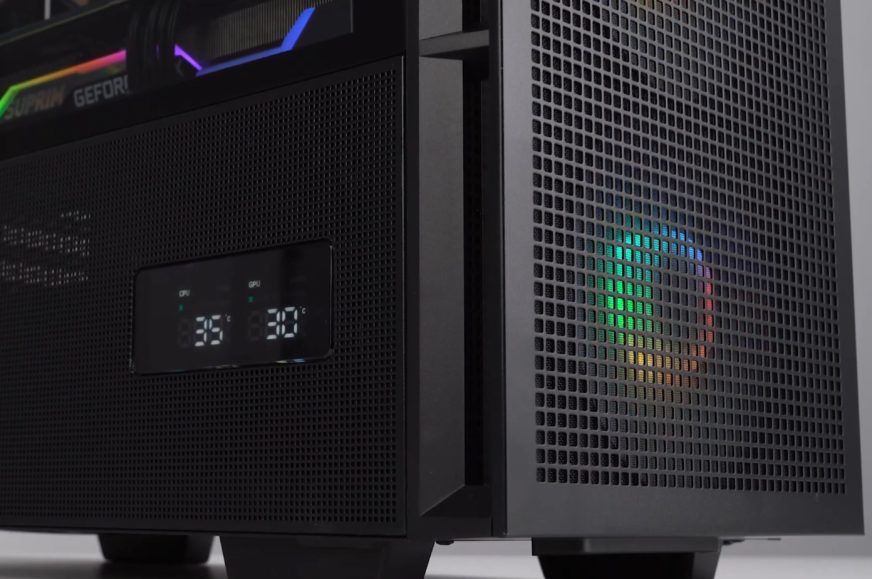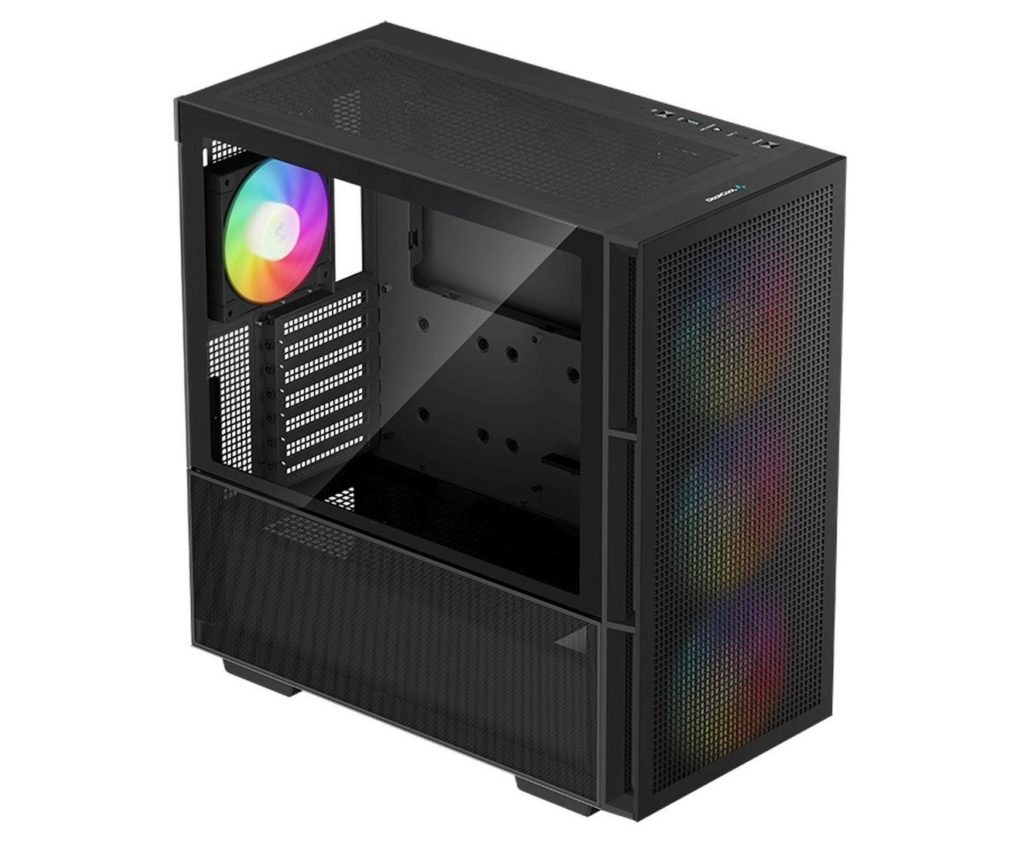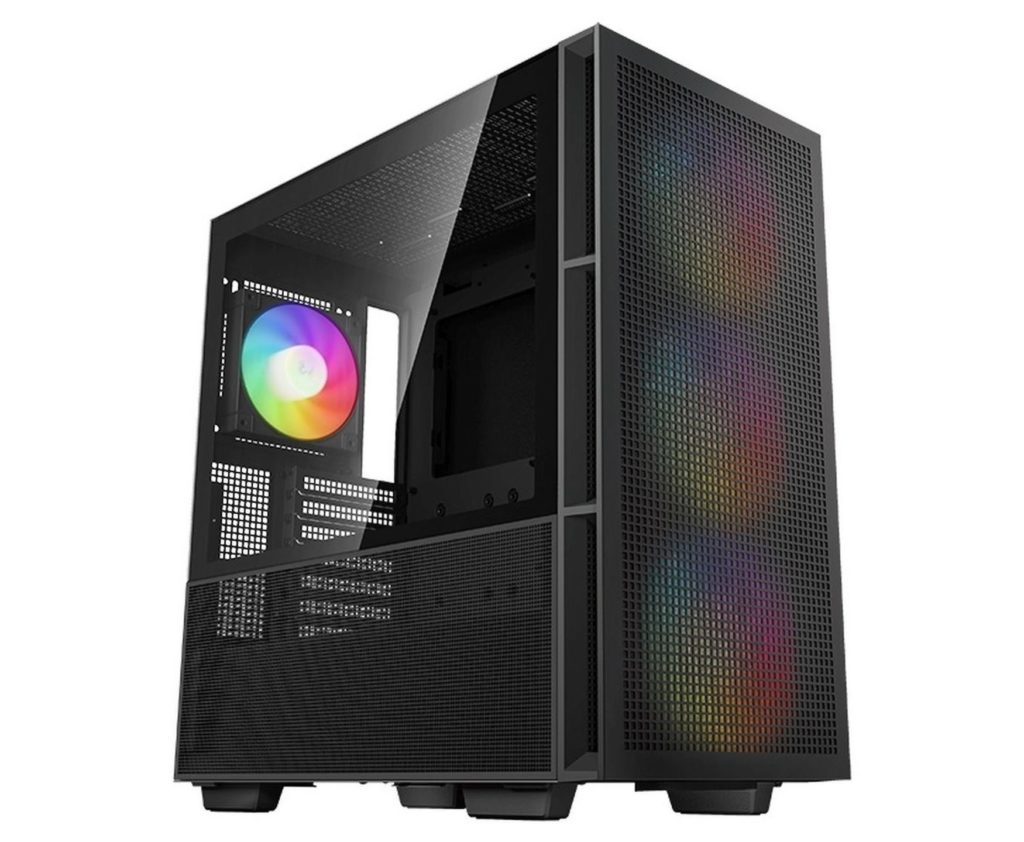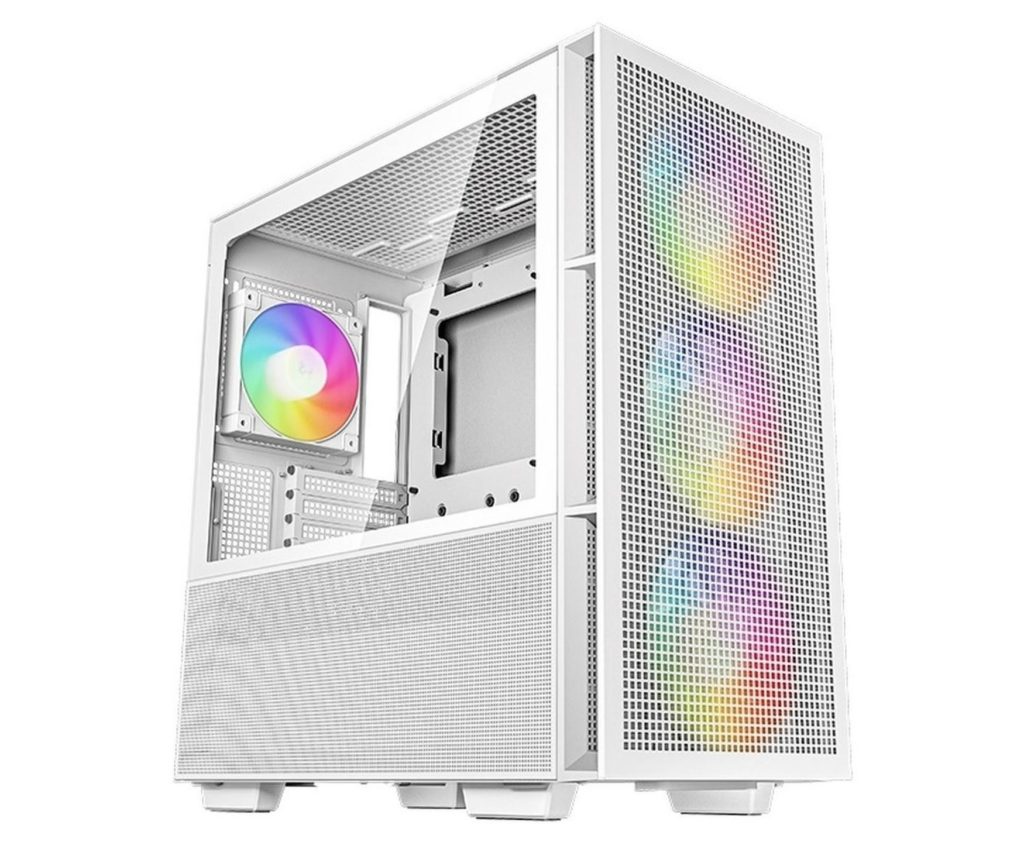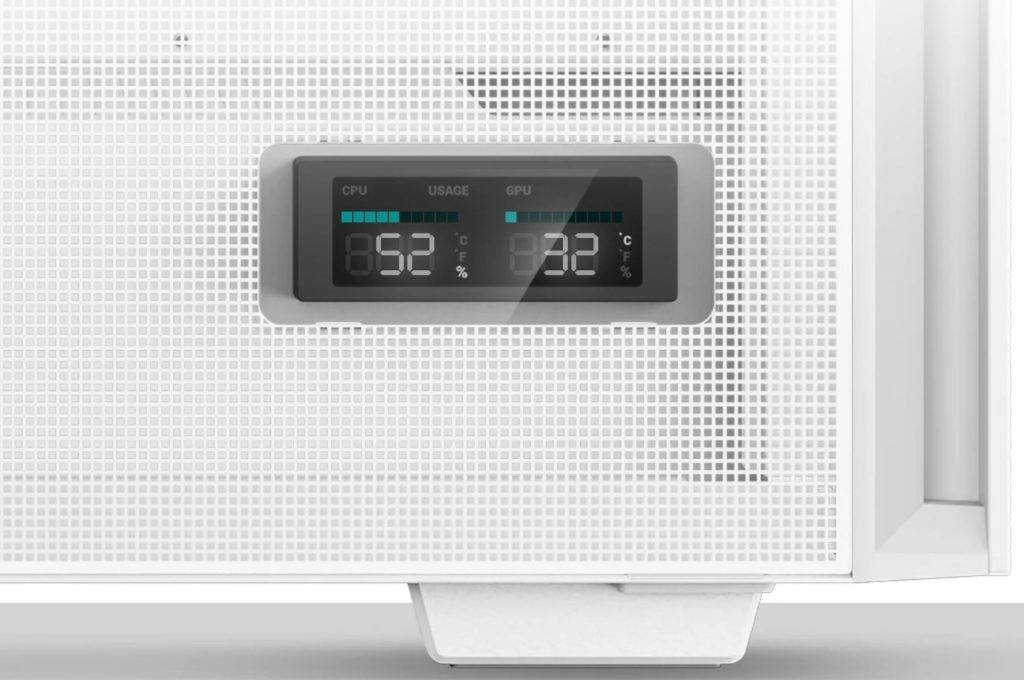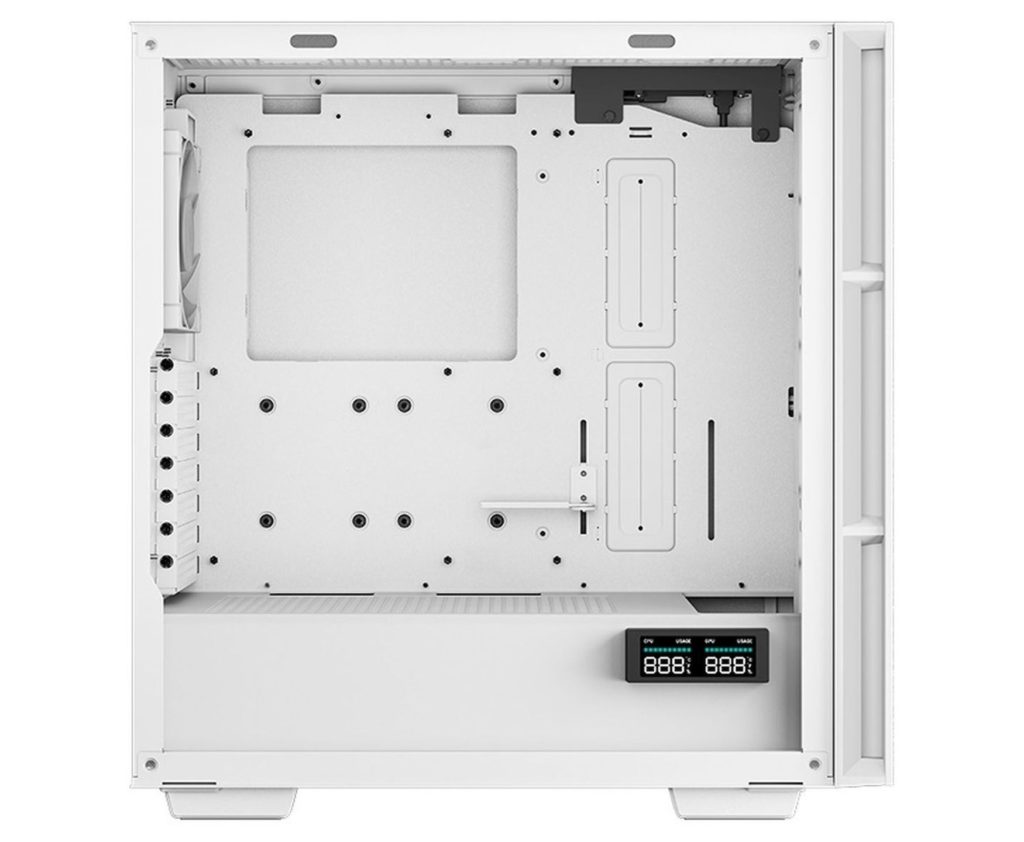DeepCool CH560
DeepCool addresses the biggest weakness of the older CH series cases – weaker cooling – in a rather selective way. Namely by preinstalling four fans (instead of one). This is no emergency solution, and the models used are based on a design that dominates the ARGB LED fan rankings in terms of efficiency. The new CH560 cases should thus feature impressive cooling performance in addition to a spectacular look.
The CH560 cases are based on the CH510 (a variant of which, the Mesh Digital, we tested), the internal layout is probably the same or very similar. One of the differences is that the CH560 has 23 mm more in depth. This is because of the more robust mask, which protrudes more from the body.
Such a change probably also means a larger offset of the grille from the fans in order to reduce noise while increasing airflow. When using three fans, such a detail can also play a role in significantly better cooling performance/noise ratio results. Especially when extra-large, 140-millimeter fans are used. Geometrically, they are strikingly reminiscent of the FC120 fans (this fan, the fourth one, is at the exhaust of the case), only proportionally larger.
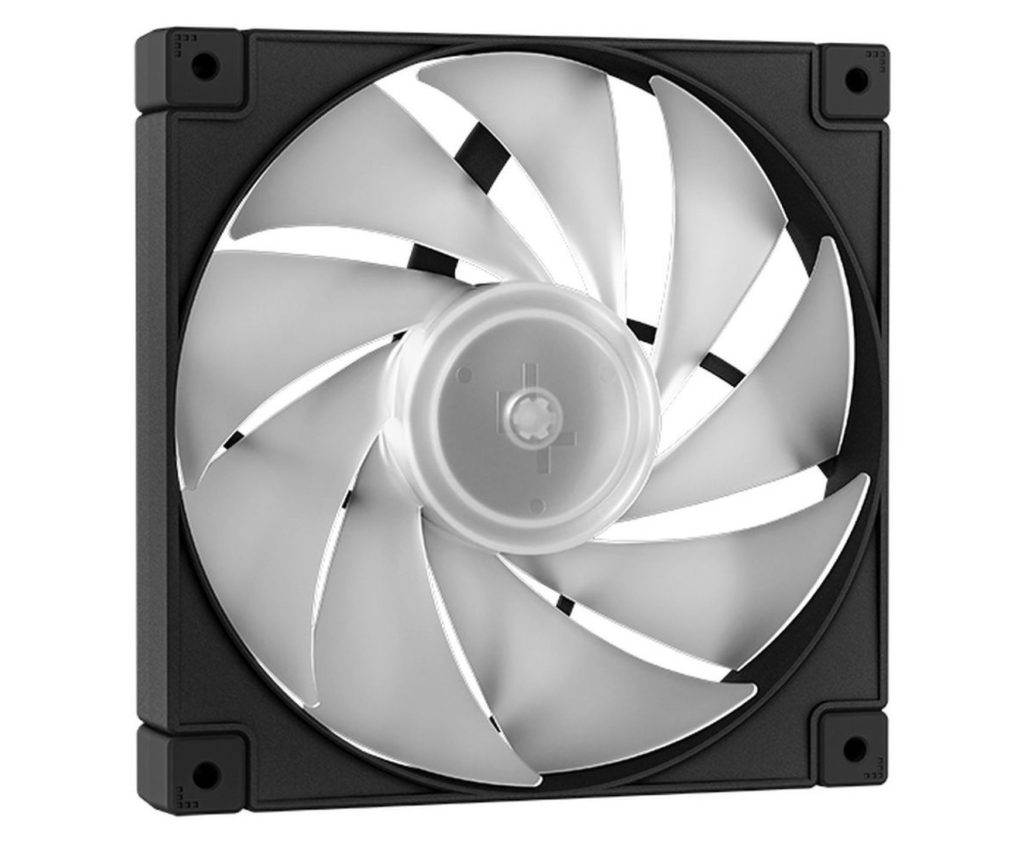
The rotor thus consists of long blades with strongly curved leading edges. From the nature of this design, higher vibrations, from which the tonal peaks arise, must be expected to some extent. This is characteristic of DeepCool fans, but it comes at the expense of high airflow and somewhat of a lower price – more robust fans would be significantly more expensive, and along with them the case itself. DeepCool suggests retailing the basic variant (CH560) for 110 EUR. That’s certainly okay, fair enough for a midi-tower (458 × 230 × 471 mm – L/W/H) with four fans that also doesn’t lack a USB-C port on the front panel.
In the white version (body and interior), the case (CH560 WH) is 10 EUR more expensive. For an additional 10 EUR extra, there are also CH560 with the Digital (WH) label. These have a pre-installed display that can simultaneously monitor and display, for example, CPU load and GPU temperature, which may be of interest typically to gamers. But you can also prefer CPU temperature information, it’s a matter of user choice. The display communicates with the motherboard via an internal USB 2.0 interface. Its location is on the side, on a mesh. It is mounted on the tunnel dedicated to an ATX power supply and HDDs. The view of it, as long as your computer is placed on the desk, is very good.
Regarding component support: when it comes to motherboards, compatibility is listed from Mini-ITX to E-ATX formats. With that said, for wide E-ATX motherboards, you have to account for overlapping grommets for cables. As long as the layout is the same as the CH510, this will already be the case for boards with 275mm wide PCBs.
Tower coolers can be 175 mm in height and the graphics cards can be up to 380 mm in length. In both cases, you won’t come across a component that won’t fit inside in practice. Naturally, if you install a radiator behind the front panel, its thickness will reduce the space for the graphics card. Normally, with conventional liquid coolers, by about 52–53 mm. Format-wise, liquid coolers are supported up to 360 mm – both in the front and in the ceiling position. Alternatively, three 120mm or two 140mm fans can be installed to alleviate the positive pressure that is present in the factory configuration of the case. There are two dedicated positions for 3.5″ drives and for 2.5″ drives as well. One position (on top of the drawer in the lower chamber) is shared.
The CH560 cases are available in stores starting July 25, 2023.
English translation and edit by Jozef Dudáš
- Contents
- DeepCool CH560





